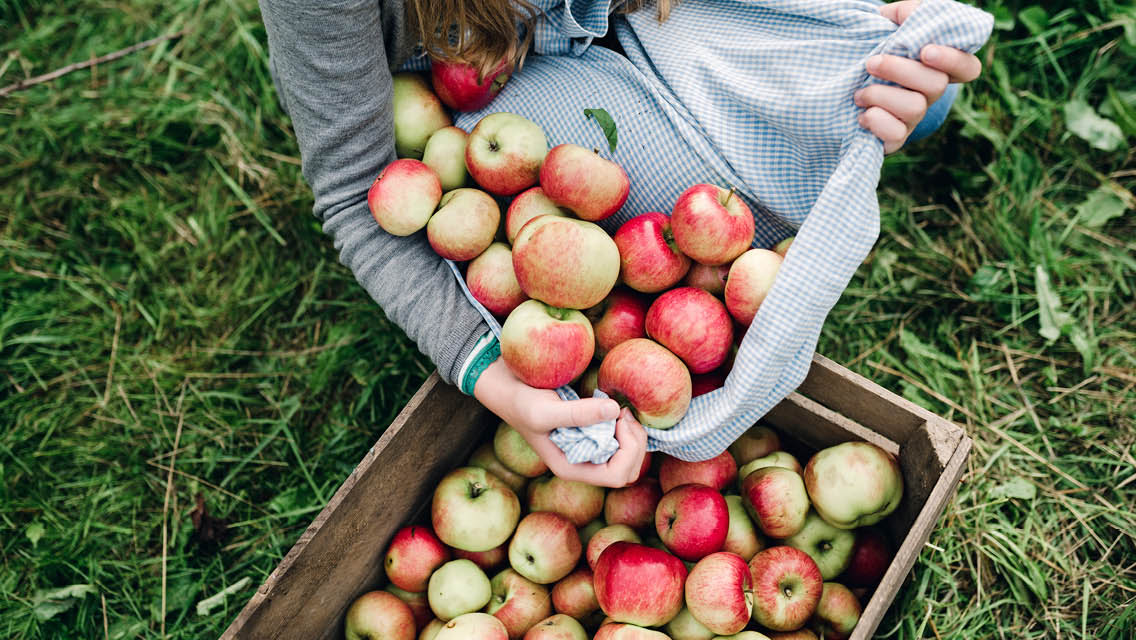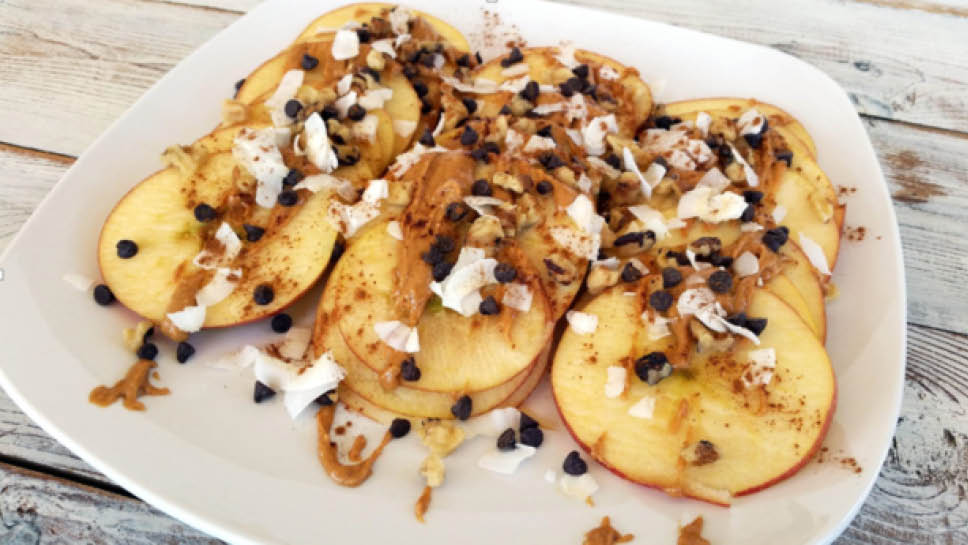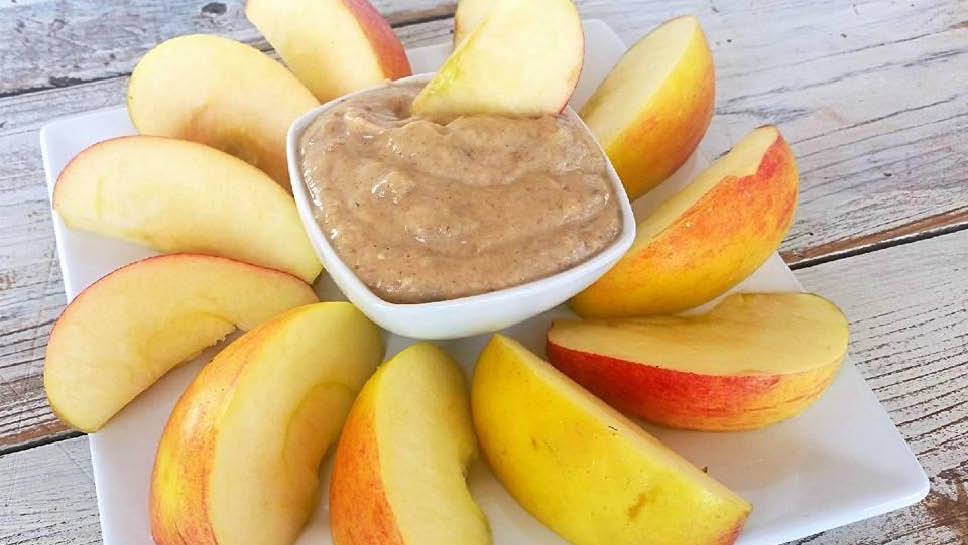Most of us have always had some kind of personal relationship with apples. Perhaps it’s the delight of eating one freshly picked from an orchard, the aroma of Grandma’s apple pie hot from the oven, the memory of that single apple that Mom packed with our school lunches. Or maybe it was the joy of eating them on sticks, covered in caramel, or their uncanny ability to keep doctors away. Whatever the reason, it’s easy to understand why apples have come to represent Americana and wholeness, and why they also make us feel so right at home.
Apples are perhaps the most versatile fruit. They can be dried, baked, pickled, juiced or turned into sauce or butter. They’re great in sweet and savory dishes. And because of their popularity with the younger generation, they’re also a fine way of enticing kids into the kitchen.
Apples are best consumed in season, from late August through October, and eaten expeditiously. They come in a rainbow of colors: lemon yellow, ruby red, emerald green, blushing pink and various shades in between. Their flavors are just as strikingly disparate, varying from tart to sweet, and their texture, from melonlike softness to explosive crispness.
Apple Attributes
When it comes to cooking, too, apples fall into some distinctly different baskets. There are three basic categories: pick-and-eat apples (for enjoying naked or dipped); baking apples (for pies, strudels, dumplings and tarts) and processing apples (for jams, jellies, sauces and butters).
The most popular apple in America is the Red Delicious, prized by commercial growers and supermarket owners for its shelf stability and uniformity. But frankly, in terms of both flavor and texture, it’s one of the least appealing apples out there. In fact, the thick skin of the commercially grown Red Delicious is genetically bred into the modern hybrids only to extend shelf life and retard spoilage. Good eating, they ain’t.
For a high-end, polish-on-your-sleeve eating experience, nothing beats the thin skin and explosive crisp-tart sweetness of Honeycrisps, Sawas or Zestars. Some apples, though, shine above others during certain times of the year and are best eaten in the months they are picked. Try Redfree and Gala in August, Jonathans and McIntosh in September and Chestnut, Braeburn and Enterprise near season’s end.
When it comes to cooking and baking, you need apples that have a more balanced profile – not too high in sweetness and not too low in acid – because the cooking process, no matter how long, intensifies and concentrates the flavors. I especially like Golden Delicious, Baldwin, Cortland, Ida Red, Northern Spy, Pippin, Greening, York Imperial and Winesap. Almost all cooking apples can also be used for processing into butters or sauce, but many apples that have great flavors when cooked don’t always hold their shape well enough for baking whole or even for pie making. (Anyone who has tried to bake a McIntosh knows what I’m talking about.)
For processing into sauce, jams or butters, I prefer the same apples I use for long-term cooking and baking. Those named above are ideal because their unique tartness becomes complex and sweet when cooked. Plus they hold together quite well under high temperatures.
When apple shopping, remember that apples get a shade sweeter as they age after picking, but only in the short term (several weeks). Long-term storage (anything more than a month) can render an apple’s texture mushy, mealy or starchy. Apples harvested late in the season – like Fujis in October – last longer after picking than early-season apples, such as the August-picked Galas.
Apples should always be firm to the touch and have a brisk floral aroma. Skins should be free of bruising and nicks, but “scalds” (apple-talk for the brownish scarring that mottles some skins) do not affect quality.
Apples can be stored at home in a cool dark place but also do well in the fridge for the short term. They should be kept in plastic bags with a few holes punched into them, in an area without temperature fluctuations. That way you won’t create an atmosphere conducive to beading and perspiring, which can lead to spoilage.
Be creative with your apple selection this season. Be sure to try any local varieties, and if you have a local orchard, pay a visit and taste their finest. It will be one more happy apple memory that you and your loved ones can share.
Apple Picking
The only sure way to know what you like for eating and baking is to do your own taste tests (a fun thing to do with kids). Most apple varietals are good for more than one thing, but here are some suggestions to get you started:
- Handing Eating: Zestar, Sawa, Honeycrisp, Chestnut, McIntosh, Gala, Fuji, Mutsu, Jonathan, Cameo, Pink Lady, Sundowner
- Pie Making and Baking: Granny Smith, Macoun, Empire, Golden Delicious, Baldwin, Cortland, Ida Red, Northern Spy, Pippin, Greening, York Imperial, Haralson, Jonagold, Braeburn, Winesap
- Jams and Processing: Lodi, Northern Spy, Rome, Pippin, Braeburn, Gravenstein and Jonalicious, Elstar
Baked Apples Recipe
- 1/3 cup currants
- 1/4 cup chopped dates
- 1/4 cup pecan pieces
- 1 tbs. brown sugar
- 1/3 cup apple brandy (optional)
- 1 cup real maple syrup
- 1/2 tsp. cinnamon
- 1/4 tsp. ground nutmeg
- 4 tbs. butter
- 6 red-skinned baking apples (Cortland or Northern Spy)
Directions
- Peel the top 25 percent of the skin off the apples (leaving the rest of the skin helps the apple hold its shape). Core the apple with a small melon-baller, only coring out the top 75 percent and leaving the blossom end intact to hold the filling.
- Combine the Calvados, currants, pecans, dates and brown sugar and set aside four hours to plump at room temperature.
- Combine the maple syrup with the cinnamon and nutmeg and gently bring to a boil. Remove the syrup from the heat and whisk in half the butter.
- Lightly butter a small (7 x 11) brownie pan or baking dish and set the apples into the dish.
- Divide the currant mixture among the apples, stuffing firmly; drizzle the currant “liquid” into the apple cores and pile any extra currant-nut pieces around the apples.
- Drizzle a quarter of the syrup into the apples, surround the apples with the remaining syrup, dot the tops with the remaining 2 tablespoons butter and bake at 375 degrees for 30 to 40 minutes (basting three times as you go) until fork tender.
- Serve warm with whipped cream, frozen yogurt or vanilla ice cream.
Apple Sauce
A great kid-friendly dish that small hands can easily help prepare.
- 4 pounds cooking apples (try a blend of varietals for the best flavor; I like to mix Golden Delicious with Spartans or Winesap – the superb balance of tart and sweet, with a full-in-the-mouth texture, is amazing).
- 1 lemon
- 1/4 tsp. cinnamon
- 1/2 tsp. pure vanilla
- 1/2 cup sugar, honey or real maple syrup (add more for seasoning, if needed)
Directions
- Wash, core and quarter the apples, but try to leave the skin on for body and flavor.
- Zest and juice the lemon, adding both to a large saucepan with the apples and cinnamon.
- Cover and cook slowly over medium heat, mashing occasionally for 30 to 35 minutes.
- Purée through a food mill, then return apples to the pan. Add the sweetener to taste while simmering slowly.
- Cook until texture is thick enough to hold shape firmly in a large spoon. Add the vanilla. Use as a condiment for grilled pork or chicken, in apple desserts like cakes and charlottes, or for just old-fashioned spoon eating.





This Post Has One Comment
[…] lb. apples, peeled and cored (peels […]